The Pacific Northwest might just have the most accommodating gardening climate in North America. From coastal British Columbia to Northern California, it is possible to grow a wide variety of plants, from tropical-looking, cold-hardy palms and bananas to plants that require a significant chill to perform, including peonies, tulips, lilacs and apples. We are lucky indeed. Why, then, should we grow natives when we have so many exotic options?
Native plants have inestimable value in the landscape. They provide essential habitat and food for birds, pollinators, and all varieties of other creatures. Properly placed, native plants are naturally beautiful and grow lustily, with minimal effort on our part. Given the many microclimates and varied conditions in a typical garden, there’s a good spot in virtually any garden for Northwest native plants.
That said, some Pacific Northwest natives really stand out from the crowd. These are gorgeous plants: adaptable and uniquely able to evoke a distinct sense of the Pacific Northwest in a garden. With beauty, wildlife habitat and versatility in mind, here are 10 of the Pacific Northwest’s best native plants for regional gardens.
Not in the Pacific Northwest? Browse plants native to other regions of the U.S.
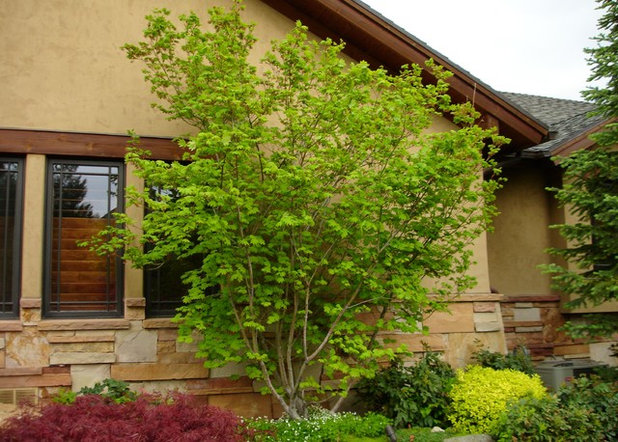
Pendleton Design Management
Vine Maple (
Acer circinatum)
Native to woodlands from southwest British Columbia to Northern California, typically as far east as the west side of the Cascades
Characteristic Northwest small tree for shade. While vine maple is well adapted to summer drought in the Pacific Northwest, it does best when provided with dappled light or morning sun only. More sun means the plant requires more summer water; it then produces even more brilliant red, purple and orange fall color. Full sun also produces bushier and less vine-like branching. Seeds and buds provide food for birds and small mammals.
Vine maple branches rarely exceeds 30 feet in habitat; in gardens, trees typically range from 12 to 20 feet tall, depending on light and moisture levels.
See how to grow vine maple
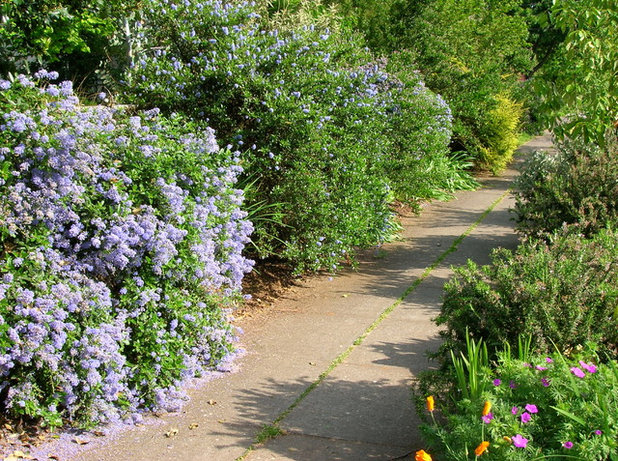
Kate Bryant
Blueblossom (
Ceanothus thyrsiflorus)
Native to coastal and intermountain North America from Oregon to California
Glorious large shrub for hot, dry sun. Blueblossom is a medium to large broadleaf evergreen shrub that thrives in a summer-dry, winter-wet climate in slight shade to full sun, with good drainage. Once it’s established, no supplemental summer water is needed. Fluffy blue or white honey-scented blossoms in spring provide insect nectar and pollen, as well as seeds, which are eaten by birds in the fall.
See how to grow blueblossom
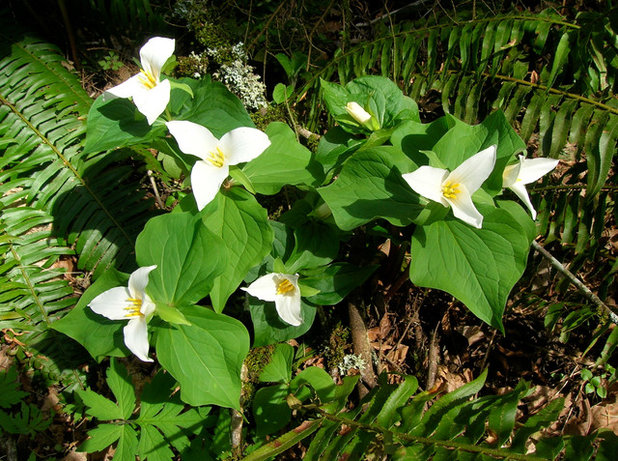
Kate Bryant
Pacific Trillium(
Trillium ovatum)
Native to western North America from British Columbia and Alberta south through Washington, Oregon, Montana, Wyoming, northern Colorado and California
The Pacific Northwest’s most iconic spring wildflower. Pacific trillium, also called western wake-robin, thrives in woodland conditions with fertile, humus-rich yet well-drained soil. It reaches about 1 foot to 1½ feet tall in time, with glistening white, tripartite flowers in late winter to early spring that are visited by pollinating insects.
See how to grow Pacific trillium
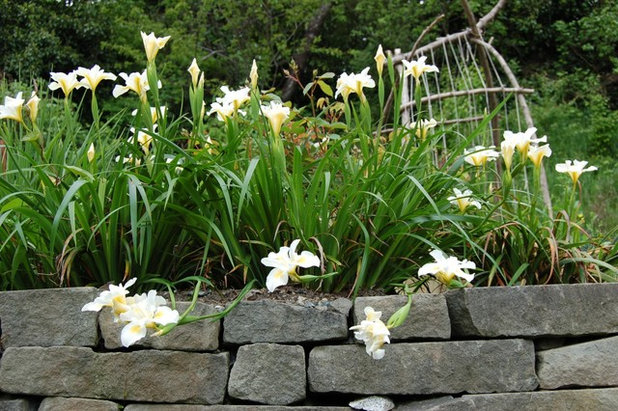
Native Root Designs
Pacific Coast Iris (
Iris spp.)
Native to the west coast of North America from the Pacific Northwest down to Southern California
Delicate-looking blossoms in candy-box colors on tough, drought-tolerant plants. Pacific coast irises (also known as PCIs) are an adaptable group of clumping iris. They can range from 6 to 18 inches in height with colors in all shades of white, pink, purple, maroon, blue, peach and yellow, many with striking markings on the petals. Sometimes they interbreed in the wild; sometimes they are bred intentionally, but they are invariably exquisite garden plants, tolerating drought and thriving in partial to full sun, with excellent drainage. Another bonus for the summer-dry west coast: No summer water is required once it’s established.
See how to grow Pacific Coast iris
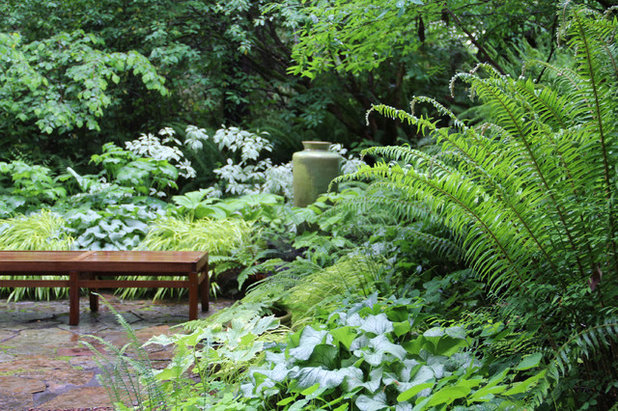
Bliss Garden Design
Western Sword Fern (
Polystichum munitum)
Native to western North America from Alaska to California and east to the Rocky Mountains
A dramatic, tough and adaptable evergreen fern. Western sword fern is so common that it is sometimes overlooked as a garden plant. Well sited, it is one of the region’s most visually distinctive — even dramatic —plants for shade. Its dark green, prehistoric-looking fronds can reach nearly 5 feet in height and width. It is also tough as nails once established, growing in seemingly inhospitable cracks between rocks, beneath established trees or on steep, north-facing banks.
See how to grow western sword fern
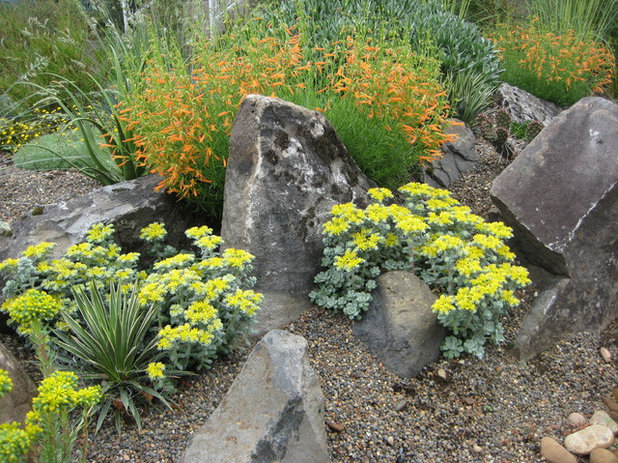
Xera Plants
Broadleaf Stonecrop (
Sedum spathulifolium)
Native to western North America from British Columbia to Southern California, in rocky habitats on coastal and inland hills and mountains
A colorful Northwest succulent. Pretty acid-yellow flowers appear on short stems in midspring, providing nectar for insects. The foliage is arranged in tidy little rosettes of plump, powdery-white leaves that turn ruddy pink or red in summer and green in winter. Suited to well-drained, sandy soils, broadleaf stonecrop requires no supplemental summer water once established.
See how to grow broadleaf stonecrop
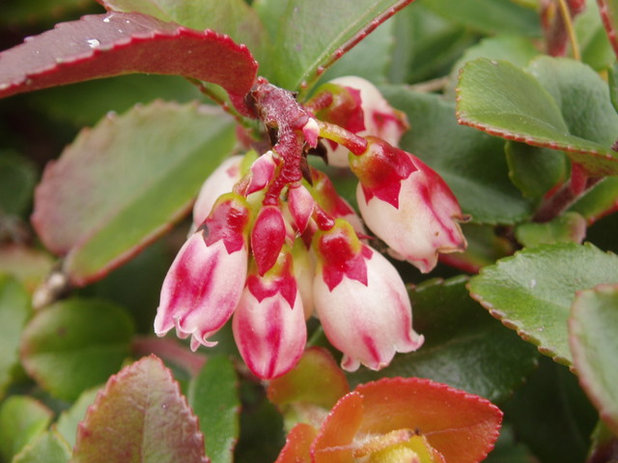 Evergreen Huckleberry
Evergreen Huckleberry (
Vaccinium ovatum)
Native to coastal western North America from California to British Columbia
A small, elegant evergreen shrub that produces delectable fruit. Versatile and handsome evergreen huckleberry grows densely in full sun; in shady sites in the wild, it can grow over 12 feet tall and wide with an open habit. When grown in rich, well-drained soil and moderate sun, it produces abundant waxy white, urn-shaped flowers that feed hummingbirds and insects, and delicious fruit that is enjoyed by wildlife and humans alike.
See how to grow evergreen huckleberry
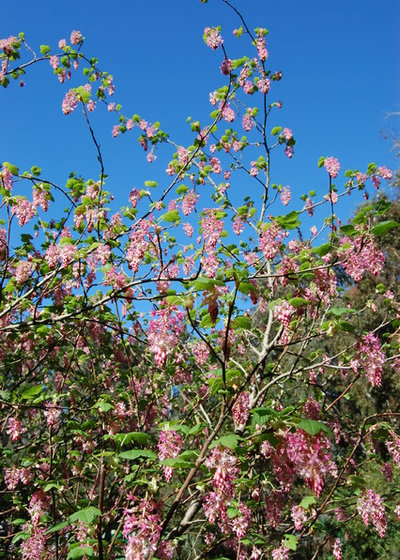
Far Out Flora
Flowering Currant (
Ribes sanguineum)
Native to western coastal North America from central British Columbia south to Central California
An iconic and cheerful west coast flowering shrub. This drought-tolerant deciduous shrub with scented, resinous foliage produces chubby racemes of pink, rosy-red or white flowers in early spring, feeding hummingbirds and hungry insects. In fall, powdery blue-black berries offer sustenance to foraging animals. Red-flowering currant reaches approximately 6 to 12 feet tall and wide.
See how to grow flowering currant
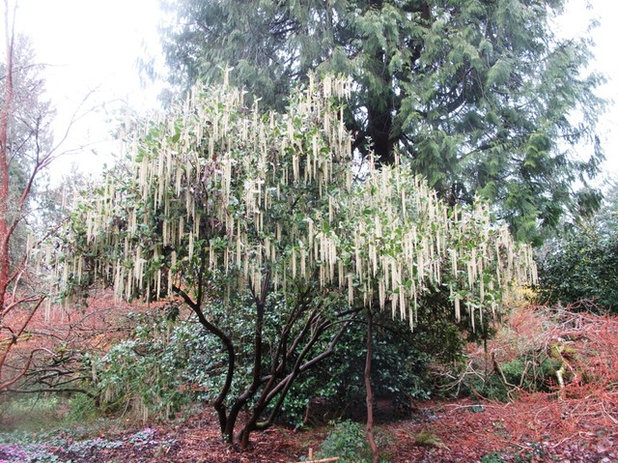
Debra Prinzing
Coast Silktassel (
Garrya elliptica)
Native to the Coast Ranges of California and southern Oregon
An unusual evergreen, winter-interest native shrub. Coast silktassel is a unique broadleaf evergreen that produces sheets of incredibly long, silvery catkins during the winter. Thriving in partial sun but adaptable, this 10- to 20-foot-tall evergreen is a prized “wall shrub” in England, adorning brick courtyard walls with festoons of winter blooms. It thrives up and down the U.S. West Coast even without the benefit of warm walls, serving as an early pollen source for bees and, later, providing seed for birds.
See how to grow coast silktassel
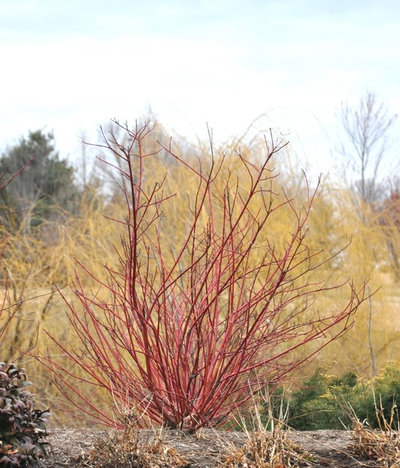
U. of Maryland Arboretum & Botanical Garden
Redtwig Dogwood(
Cornus sericea)
Native in moist areas of northern and western North America, from Alaska east to Newfoundland, south to northern Mexico in the west, and Illinois and Virginia in the east
A brightly colored winter interest shrub for damp areas. Redtwig dogwood, also called redosier (or red-osier) dogwood, is a deciduous shrub ranging from 3 to 12 feet tall that produces strikingly bright red stems in winter. Later, flowers, foliage and fruit all serve as important food for insects and birds. Yellow-twigged and variegated-leafed varieties also exist.
See how to grow redtwig dogwood





